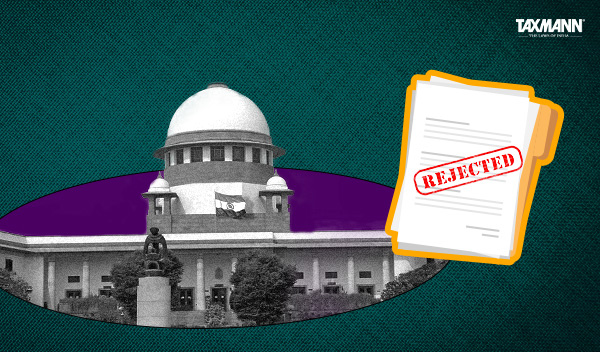Writ Not Maintainable in ITC Fraud Case | HC
- Blog|News|GST & Customs|
- 2 Min Read
- By Taxmann
- |
- Last Updated on 7 June, 2025

Case Details: Superb Industries vs. Additional Commissioner CGST - [2025] 175 taxmann.com 32 (Delhi)
Judiciary and Counsel Details
- Pratibha M. Singh & Rajneesh Kumar Gupta, JJ.
-
Vaibhav Jain, Adv. for the Petitioner.
-
Akash Verma, SSC & Ms Aanchal Uppal, Adv. for the Respondent.
Facts of the Case
The petitioner, a registered assessee, filed a writ petition before the Hon’ble High Court challenging an order passed by the Additional Commissioner under CGST, which had been uploaded on the GST portal. The order involved allegations of fraudulent availment of Input Tax Credit (ITC) and was passed against 428 parties. The petitioner submitted that no show cause notice (SCN) was received prior to the issuance of the impugned order, resulting in no reply being filed. Relying on the absence of proper notice, the petitioner sought relief directly under Article 226 of the Constitution of India.
The primary legal issue raised was the maintainability of the writ petition in a case involving ITC fraud, bypassing the statutory appellate mechanism under Section 107 of the CGST Act.
High Court Held
The Hon’ble High Court held that the writ petition was not maintainable in view of settled judicial position that matters involving allegations of fraudulent ITC availment must be addressed through the statutory appellate process. The Court observed that in similar matters involving fraud, judicial precedent had consistently discouraged invocation of writ jurisdiction.
Accordingly, the petitioner was granted liberty to file an appeal under Section 107 of the CGST Act and Delhi GST Act along with the necessary pre-deposit. The Court further directed that if such appeal was filed within the prescribed time, it shall be adjudicated on merits and not dismissed on limitation grounds.
List of Cases Reviewed
- Mukesh Kumar Garg v. Union of India [2025] 174 taxmann.com 638 (Delhi) (para 7)
- Sunny Jagga v. Union of India [W.P. (C) No. 6443 of 2025] (para 7)
- Asstt. Commissioner of State Tax v. Commercial Steel Ltd. [2021] 130 taxmann.com 180/88 GST 799/52 GSTL 385 (SC) (para 7), followed
List of Cases Referred to
- Mukesh Kumar Garg v. Union of India [2025] 174 taxmann.com 638 (Delhi) (para 5)
- Sunny Jagga v. Union of India [W.P. (C) No. 6443 of 2025] (para 5)
- Asstt. Commissioner of State Tax v. Commercial Steel Ltd. [2021] 130 taxmann.com 180/88 GST 799/52 GSTL 385 (SC) (para 7).
Disclaimer: The content/information published on the website is only for general information of the user and shall not be construed as legal advice. While the Taxmann has exercised reasonable efforts to ensure the veracity of information/content published, Taxmann shall be under no liability in any manner whatsoever for incorrect information, if any.

Taxmann Publications has a dedicated in-house Research & Editorial Team. This team consists of a team of Chartered Accountants, Company Secretaries, and Lawyers. This team works under the guidance and supervision of editor-in-chief Mr Rakesh Bhargava.
The Research and Editorial Team is responsible for developing reliable and accurate content for the readers. The team follows the six-sigma approach to achieve the benchmark of zero error in its publications and research platforms. The team ensures that the following publication guidelines are thoroughly followed while developing the content:
- The statutory material is obtained only from the authorized and reliable sources
- All the latest developments in the judicial and legislative fields are covered
- Prepare the analytical write-ups on current, controversial, and important issues to help the readers to understand the concept and its implications
- Every content published by Taxmann is complete, accurate and lucid
- All evidence-based statements are supported with proper reference to Section, Circular No., Notification No. or citations
- The golden rules of grammar, style and consistency are thoroughly followed
- Font and size that’s easy to read and remain consistent across all imprint and digital publications are applied



 CA | CS | CMA
CA | CS | CMA
